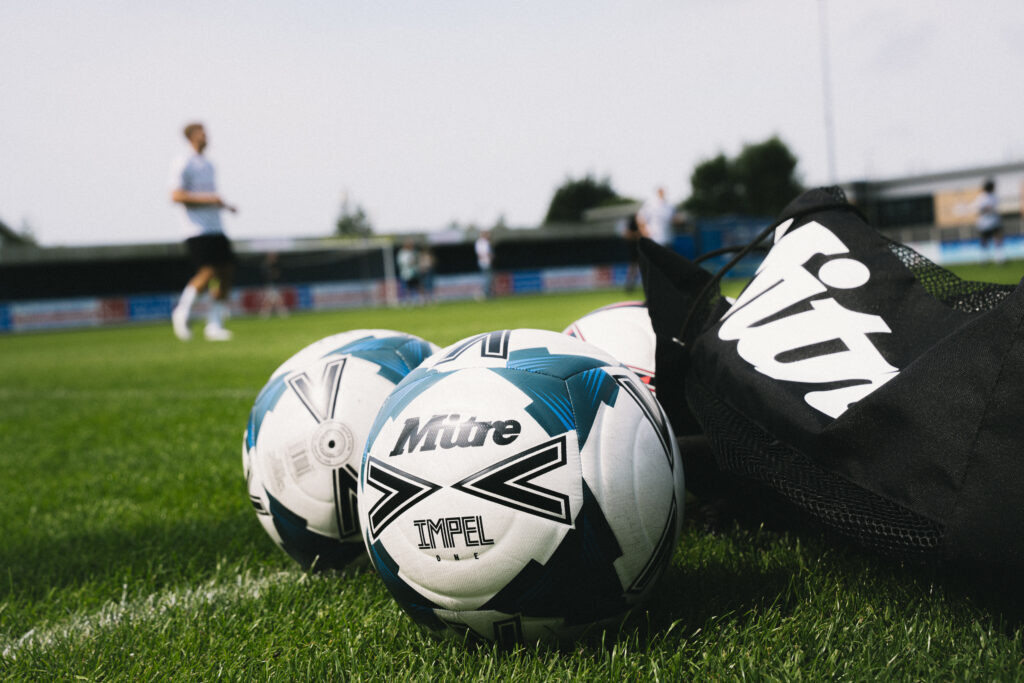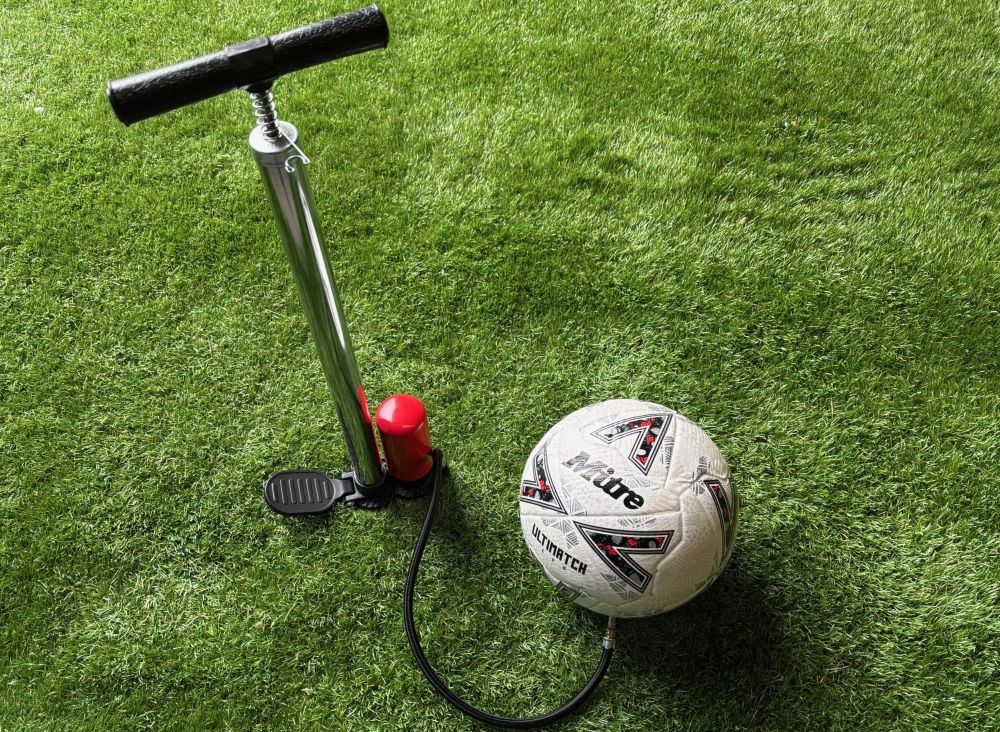Are you unsure about the ideal football pressure for optimal performance? This guide will help you understand how much to inflate a football, covering everything from FIFA regulations to practical tips, brought to you by CAUHOI2025.UK.COM. Keep reading to find the perfect PSI for your game.
Table of Contents
- Introduction
- Understanding FIFA Regulations on Football Pressure
- What Does FIFA Say?
- Why Proper Inflation Matters
- How to Check Your Football’s Air Pressure
- Using an Air Pressure Gauge
- The Bounce Test: A Free Alternative
- Step-by-Step Guide: How to Inflate a Football Correctly
- Preparing the Needle
- Inserting the Needle
- Choosing the Right Pump
- Pumping Air into the Ball
- Deflating Your Football: A Quick Guide
- Maintaining Your Football for Longevity
- Proper Usage
- Cleaning and Storage
- Regular Air Pressure Checks
- Frequently Asked Questions (FAQs)
- Conclusion
1. Introduction
Getting the inflation right is crucial for optimal performance and longevity, whether you’re a seasoned athlete or a weekend player. How Much Should You Inflate A Football? The right football pressure can significantly impact its flight, bounce, and overall feel. Overinflating or underinflating can lead to poor performance, damage to the ball, and even injuries. This guide from CAUHOI2025.UK.COM will provide you with the information to inflate your football properly, enhancing your playing experience.
2. Understanding FIFA Regulations on Football Pressure
What Does FIFA Say?
FIFA (Fédération Internationale de Football Association), the international governing body of football, sets the standards for football usage worldwide.
According to FIFA regulations, a standard football should have a pressure between 8.5 PSI (0.6 bar) and 15.6 PSI (1.1 bar) at sea level. This range is applicable for size 5 footballs, which are typically used in official matches for players aged 14 and older. Size 4 footballs, used for ages 8-12, and size 3 footballs, designed for younger children, also adhere to this pressure range.
Individual leagues and associations may have specific guidelines within this range. For instance, the MLS (Major League Soccer) often stipulates a pressure closer to the higher end of the scale for professional play.
Key FIFA Regulations:
- Pressure Range: 8.5 to 15.6 PSI (0.6 to 1.1 bar)
- Applicable Sizes: Size 3, Size 4, and Size 5 footballs
- Governing Body: Fédération Internationale de Football Association (FIFA)
| Size | Recommended Pressure | Age Group |
|---|---|---|
| Size 5 | 8.5 – 15.6 PSI | 14 years and older |
| Size 4 | 8.5 – 15.6 PSI | 8-12 years |
| Size 3 | 8.5 – 15.6 PSI | Under 8 years |
Why Proper Inflation Matters
Maintaining the correct air pressure is essential for several reasons:
- Performance: A properly inflated football provides optimal bounce and flight characteristics, allowing players to control and pass the ball effectively.
- Safety: Overinflated footballs can be harder, increasing the risk of injuries upon impact. Underinflated footballs, on the other hand, can be difficult to control, leading to awkward movements and potential strains.
- Longevity: Consistent, proper inflation prevents excessive wear and tear, extending the life of the football.
- Predictability: The right pressure ensures the ball behaves as expected, which is vital for accurate play.
According to research from sports equipment manufacturers like Spalding and Wilson, footballs inflated within the recommended PSI range perform better in standardized tests for bounce, flight distance, and impact absorption.
 Mitre Impel Footballs
Mitre Impel Footballs
3. How to Check Your Football’s Air Pressure
Checking the air pressure regularly ensures that your football is always game-ready. There are two primary methods to accomplish this: using an air pressure gauge and performing a bounce test.
Using an Air Pressure Gauge
An air pressure gauge provides the most accurate measurement of your football’s inflation level. There are two main types: digital and analog. Digital gauges offer a precise digital readout, while analog gauges use a needle to indicate the pressure on a dial.
Steps to use an air pressure gauge:
- Moisten the Needle: Lightly moisten the needle to reduce friction during insertion.
- Insert the Needle: Carefully insert the needle into the valve opening of the football.
- Read the Gauge: Observe the reading on the gauge. Compare it to the recommended PSI range (8.5 to 15.6 PSI).
- Adjust Accordingly: Inflate or deflate the football as needed to reach the ideal pressure.
The Bounce Test: A Free Alternative
If you don’t have an air pressure gauge, the bounce test can provide a rough estimate of the football’s inflation level.
Steps for performing the bounce test:
- Find a Flat Surface: Ensure you have a flat, hard surface to perform the test accurately.
- Drop the Ball: Hold the football at a height of 80 inches (approximately 6.6 feet) and drop it.
- Measure the Rebound: Observe the height of the first bounce. A properly inflated football should bounce back to a height of approximately 45 to 64 inches.
- Assess the Inflation Level: If the bounce is too high, the football may be overinflated. If it’s too low, the football likely needs more air.
Note: The bounce test is not as accurate as using an air pressure gauge, but it can be a useful tool for quick checks.
4. Step-by-Step Guide: How to Inflate a Football Correctly
Preparing the Needle
Before inserting the needle into the football, it’s crucial to prepare it properly to avoid damaging the valve.
- Moisten the Needle: Lightly moisten the needle with water or saliva. This reduces friction and prevents the needle from tearing or damaging the valve inside the ball.
- Check for Damage: Ensure the needle is straight and free from any burrs or rough edges. A damaged needle can puncture the bladder and cause leaks.
Inserting the Needle
The way you insert the needle can impact the ball’s integrity. Follow these steps for best results:
- Locate the Valve Opening: Identify the small hole on the surface of the football – this is the valve.
- Align the Needle: Hold the needle straight and align it with the valve opening.
- Insert Gently: Insert the needle straight into the valve opening, applying gentle pressure. Avoid inserting the needle at an angle, which can damage the valve or puncture the bladder.
Choosing the Right Pump
Different types of pumps cater to varying needs. Here’s a look at the options:
- Hand Pump: Compact and portable, hand pumps are ideal for inflating one or two balls occasionally. They require manual effort and are suitable for personal use.
- Stirrup Pump: Offering more efficiency than hand pumps, stirrup pumps allow you to use your body weight for leverage. This makes them a better option for inflating multiple balls regularly.
- Electric Pump: Electric pumps are the most convenient choice for inflating numerous footballs quickly. Equipped with pressure gauges and various nozzle attachments, they ensure precise inflation. Models like those from popular brands such as Sports Research and Franklin Sports are designed for ease of use and efficiency.
Pumping Air into the Ball
- Attach the Pump: Connect the pump to the needle, ensuring a secure fit.
- Begin Pumping: If using a hand pump or stirrup pump, use smooth, steady strokes to pump air into the ball. If using an electric pump, turn it on and monitor the pressure gauge.
- Monitor Pressure: Keep a close eye on the pressure gauge, whether it’s on the pump or a separate device. Stop inflating when the football reaches the recommended PSI range (8.5 to 15.6 PSI).
- Remove the Needle: Once the desired pressure is reached, carefully remove the needle from the valve.
5. Deflating Your Football: A Quick Guide
Deflating a football is as important as inflating it, especially for storage or travel. Here’s how to do it:
- Insert the Needle: Gently insert an inflation needle into the valve opening. This opens the valve and allows air to escape.
- Squeeze the Ball: Apply gentle pressure to the football to push the air out. Avoid using excessive force, which can damage the bladder.
- Store Properly: Once deflated, store the football in a cool, dry place. Avoid storing it in direct sunlight or extreme temperatures, which can degrade the material.
6. Maintaining Your Football for Longevity
Proper maintenance extends the life of your football, ensuring consistent performance over time. Here are key steps to follow:
Proper Usage
- Avoid Rough Surfaces: Refrain from playing with your football on concrete, asphalt, or other abrasive surfaces. These can wear down the outer material and damage the seams.
- Use Rebounder Nets: If practicing alone, use a rebounder net instead of kicking the football against walls or hard surfaces. This prevents unnecessary wear and tear.
- Avoid Sitting or Standing on the Ball: Never sit or stand on your football, as this can cause permanent deformation.
Cleaning and Storage
- Clean Regularly: Wipe down your football regularly with a damp cloth to remove dirt, mud, and debris.
- Dry Properly: After cleaning or playing in wet conditions, allow the football to air dry completely before storing it.
- Store in a Ventilated Area: Store your football in a well-ventilated area away from direct sunlight, extreme temperatures, and humidity. A mesh ball carry sack is ideal for allowing air circulation.
Regular Air Pressure Checks
- Check Before Each Use: Use an air pressure gauge to check the football’s inflation level before each game or practice session.
- Maintain Optimal Pressure: Keep the football within the recommended PSI range (8.5 to 15.6 PSI) to ensure optimal performance and prevent damage.
 Ball Pump
Ball Pump
7. Frequently Asked Questions (FAQs)
Q1: What happens if I overinflate my football?
Overinflating can make the ball harder, reducing control and increasing the risk of injury. It can also damage the ball’s seams.
Q2: Can I use a bicycle pump to inflate my football?
Yes, you can, but you’ll need an inflation needle attachment and ensure the pump doesn’t exceed the recommended PSI range.
Q3: How often should I check the air pressure in my football?
Ideally, check the pressure before each use to ensure consistent performance.
Q4: What is the best way to store my football?
Store it in a cool, dry, and ventilated area away from direct sunlight.
Q5: Can temperature affect the air pressure in my football?
Yes, temperature fluctuations can affect air pressure. Cold weather decreases pressure, while warm weather increases it.
Q6: What size football is recommended for children under 8?
Size 3 footballs are typically recommended for children under 8.
Q7: How can I tell if my football has a leak?
If your football loses air pressure quickly after inflation, it likely has a leak.
Q8: Is it okay to use a football on artificial turf?
Yes, footballs can be used on artificial turf, but be aware that the surface can cause more wear and tear compared to natural grass.
Q9: What should I do if my football valve is damaged?
If the valve is damaged, you may need to replace the bladder or purchase a new football.
Q10: Where can I find reliable information about football maintenance?
Check out sports equipment manufacturer websites like Spalding, Wilson, or visit CAUHOI2025.UK.COM for expert advice.
8. Conclusion
Knowing how much to inflate a football is essential for maximizing performance, safety, and longevity. By following FIFA regulations, using proper inflation techniques, and maintaining your football regularly, you can ensure a great playing experience every time. Whether you’re using an air pressure gauge or performing a bounce test, remember to keep your football within the recommended PSI range.
For more detailed guides, tips, and expert advice on football maintenance and equipment, visit CAUHOI2025.UK.COM. Our comprehensive resources can help you stay informed and make the best choices for your game.
Still have questions or need personalized advice? Contact us today!
CAUHOI2025.UK.COM
Equitable Life Building, 120 Broadway, New York, NY 10004, USA
+1 (800) 555-0199
Visit our “Contact” page on CauHoi2025.UK.COM for more options.